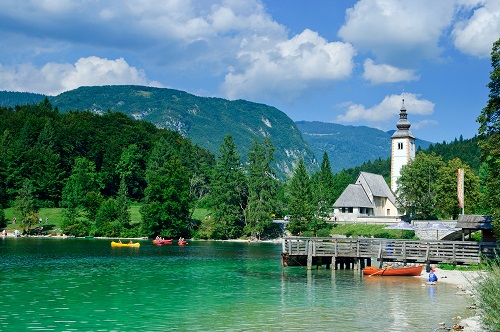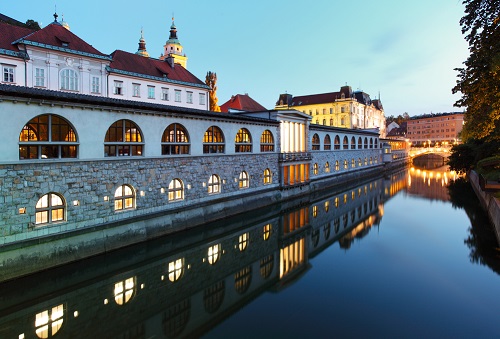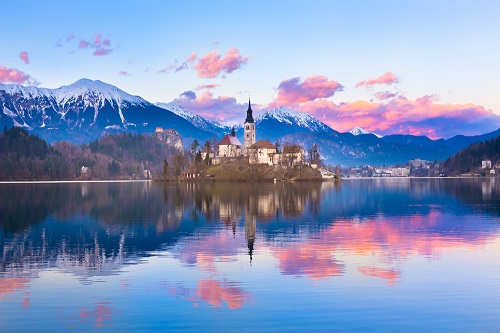Slovenia has become an increasingly popular destination for medical tourism, due to the country’s national healthcare coverage and the relative affordability of certain types of care. However, waiting times can be long, and out-of-pocket payments can add up. It is therefore important to make sure that you have the right insurance in place for you and your family’s needs.
Compulsory health insurance in Slovenia
Health insurance is compulsory in Slovenia. The Zavod za zdravstveno zavarovanje Slovenije (ZZZS) or Health Insurance Institute of Slovenia (HIIS), Slovenia’s state healthcare system, is funded by income and pension contributions. Employees contribute 6.36% of their salary, which employers match and top up to 7.09%, to cover work-related medical concerns. Self-employed Slovenian residents register for HIIS and pay a rate based on their income, and 5.96% is deducted from pensions. You have to register as a Slovenian resident when you have lived in the country for three months, at which time you will be signed up for HIIS contributions and covered under the scheme.
Pregnant women, students, children, people receiving benefits, and unemployed people are automatically covered by HIIS, with no need for contributions. Emergency treatment is free for everyone in Slovenia, and a lot of basic non-emergency medical care is completely covered by HIIS. However, there are many categories of care that require a co-payment, as well as some that are not covered at all and must be undertaken privately.
Examples of care requiring no co-payment under HIIS include compulsory vaccinations, prevention, detection and treatment of HIV and other contagious diseases, treatment and rehabilitation of blindness and myopia, and treatment and rehabilitation of diseases and injuries at work.

Other treatments and procedures are free for certain qualifying groups, but they require a 10% to 90% co-payment for other patients. These are as follows:
- Transplantations of organs, most demanding surgical operations irrespective of the reason for them, intensive therapy, dialysis and other most demanding therapeutic and rehabilitation services – 10% additional payment
- Medical services in the field of specialist-outpatient and inpatient activities; services in the field of health resort treatment as the continuation of hospital treatment, with the exception of injuries that were not caused at work; services in the field of dental and oral cavity treatment; orthopaedic, orthotic, hearing and other medical appliances – 20% additional payment
- Specialist-outpatient, inpatient and health resort services as continuation of hospital treatment, and the non-medical part of nursing in a hospital or health resort as continuation of hospital treatment, as well as orthopaedic, orthotic and other appliances related to the treatment of injuries that were not caused at work – 30% additional payment
- Medical services of health resort treatment and non-medical nursing within health resort treatment (the hotel part of the hospitalisation) which is not a continuation of hospital treatment – 90% additional payment
- Dental prosthetic treatment of adults, ophthalmic appliances for adults – 90% additional payment
- Medical products from positive list – 0% to 30% additional payment
- Medical products from interim list – 90% additional payment
- Medical products from negative list – 100% additional payment
- Ambulance transport which is not urgent – 90% additional payment
A full list of what is covered can be found on the HIIS/ZZZS website.
Voluntary/supplementary health insurance
There are three Slovenian providers for voluntary or supplemental health insurance (VHI). Vzajemna, Triglav and Generali offer plans that cover the co-payments required by HIIS insurance. By law, policy premiums are the same for everyone. The monthly cost for VHI with Vzajemna is currently €35.67, with Triglav is €35.55, and with Generali is €34.50.

If you do not opt for VHI, the below details how much you can expect as a co-payment for different types of treatment (costs correct as of December 2019):
- Femoral fracture – € 1,768.62 co-payment required
- Appendix removal – € 854.83 co-payment required
- Hip replacement – € 1,630.63 co-payment required
- Cardiovascular ultrasound – € 11.37 co-payment required
- Two-week therapy at the spa – € 1,550.00 co-payment required
Each VHI supplier also offers additional health insurance packages, such as for specialist care, dentistry and accidents. The main benefit of specialist cover is to reduce waiting times, as these can be long under HIIS. A lot of dental care is not covered by HIIS or VHI, so you may want to consider getting dental insurance.
Medication
Medications for certain conditions in Slovenia are free, but otherwise the HIIS maintains positive, intermediate/interim and negative lists of medications. Positive medications are covered 70% to 100% by HIIS, intermediate ones are covered 10% to 25%, and negative medications are not covered at all. The remainder must be co-paid by the patient, if they do not have VHI, and the cost will depend on what the medication is and whether the doctor prescribes brand name or generic drugs.
Groups of ‘mutually interchangeable’ drugs are defined by the Office of the Republic of Slovenia for Medical Products. They are medicines containing the same active ingredients that can be interchanged to keep costs low. Included in the groups are medication for diabetes, cardiovascular disease, skin diseases and allergies, and contraception.
Under the Medicinal Products Act, there is a maximum allowed price (MAP) and agreed price for each medication, and the HIIS also sets the highest recognised value (HRV) for drugs covered by the HIIS plan. If a prescription exceeds the HRV, the difference is payable by the patient. You can search the Central Medicines Database to see which medications are covered by HIIS and what the co-payments/surcharges are for others.
Healthcare is generally of a high quality in Slovenia, and the HIIS scheme provides a good level of protection. However, if you are considering relocating to Slovenia, it is important to consider all your current and future needs. This way, you can make sure that you have the right coverage to avoid surprise out-of-pocket costs as much as possible.

